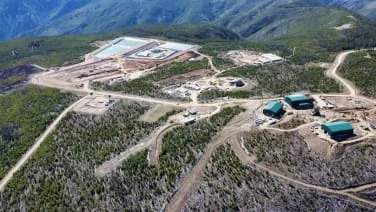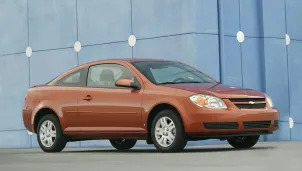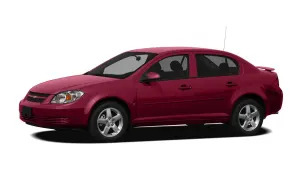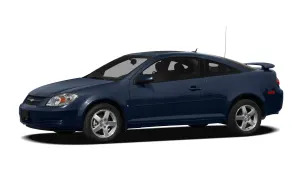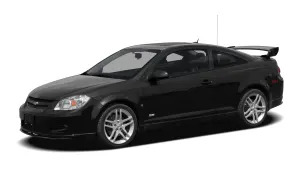2009 Chevrolet Cobalt
2009 Chevy Cobalt SS Turbo – Click above for high-res image gallery The first-gen Cobalt SS failed to deliver with a supercharged 2.0L Ecotec four-cylinder producing 205 horsepower and a cast of supporting components that did little to hide the Cobalt's rental car roots. But then something entirely unexpected happened. The GM Performance Division completely reworked the Cobalt SS for 2008, swapping in a more powerful turbocharged engine, upgrading the rest of the mechanicals, and tweaking the entire package on the world's most demanding race tracks, including the famed Nürburgring in Germany. The result is – and we're not kidding here – the most impressive performance car to wear a bow-tie badge on sale today*. Exactly how General Motors turned a bottom-of-the-pack, front-wheel-drive econocar into a class-leading sport compact is revealed after the jump. *My colleagues thought it best to explain this statement. There's not a bow-tie badge to be found on the Corvette and you can't find a Camaro SS on a dealer lot anywhere yet. %Gallery-34334% Photos Copyright ©2008 John Neff / Weblogs, Inc. The heart of the Cobalt SS Turbo is its engine, a turbocharged, direct-inject version of the same 2.0L Ecotec in the first-gen car that now produces 260 horsepower and 260 lb-ft of torque. It is the Alpha and Omega of the Ecotec engine family and a marvel of modern engineering. Available since 2008 in the Cobalt SS Turbo and HHR SS, and also in the Pontiac Solstice GXP and Saturn Sky Red Line, the turbo DI Ecotec does now what Ford promises its EcoBoost engines will do in a few years. That is, produce V6 power with four-cylinder fuel economy. Case in point, the Cobalt SS Turbo returns 30 mpg on the highway. Though peak torque arrives early on at 2,000 rpm, this engine pulls the Cobalt SS Turbo like Usain Bolt dragging a Little Red Flyer for 200 meters. Turbo lag is scant, with a torrent rush of power coming on early and building linearly until the tach needle begins bouncing against its 6,250 rpm redline. Chevy claims the Cobalt SS Turbo will hit 60 mph in 5.7 seconds, which must be conservative considering how fast the trip feels. Driving a little car with a powerful engine can be unsettling if the balance isn't restored by a tuned suspension, bigger wheels, better brakes and, most importantly, improved steering feel. The old Cobalt SS didn't go far enough to equalize its Yin and Yang, but the new one feels like the Tao of Speed. You just don't expect what you get when you sit behind the wheel of the Cobalt SS Turbo. The first sign you haven't mistakenly gotten in a Cobalt LT is that the clutch pedal is firm and pushes back hard against your left foot, while the chunky five-speed stick follows a very precise path into each gear. It feels nothing like the cream puff clutch and sloppy shifter you would expect in a Yankee-built economy car, but like a …
Full Review
2009 Chevy Cobalt SS Turbo – Click above for high-res image gallery The first-gen Cobalt SS failed to deliver with a supercharged 2.0L Ecotec four-cylinder producing 205 horsepower and a cast of supporting components that did little to hide the Cobalt's rental car roots. But then something entirely unexpected happened. The GM Performance Division completely reworked the Cobalt SS for 2008, swapping in a more powerful turbocharged engine, upgrading the rest of the mechanicals, and tweaking the entire package on the world's most demanding race tracks, including the famed Nürburgring in Germany. The result is – and we're not kidding here – the most impressive performance car to wear a bow-tie badge on sale today*. Exactly how General Motors turned a bottom-of-the-pack, front-wheel-drive econocar into a class-leading sport compact is revealed after the jump. *My colleagues thought it best to explain this statement. There's not a bow-tie badge to be found on the Corvette and you can't find a Camaro SS on a dealer lot anywhere yet. %Gallery-34334% Photos Copyright ©2008 John Neff / Weblogs, Inc. The heart of the Cobalt SS Turbo is its engine, a turbocharged, direct-inject version of the same 2.0L Ecotec in the first-gen car that now produces 260 horsepower and 260 lb-ft of torque. It is the Alpha and Omega of the Ecotec engine family and a marvel of modern engineering. Available since 2008 in the Cobalt SS Turbo and HHR SS, and also in the Pontiac Solstice GXP and Saturn Sky Red Line, the turbo DI Ecotec does now what Ford promises its EcoBoost engines will do in a few years. That is, produce V6 power with four-cylinder fuel economy. Case in point, the Cobalt SS Turbo returns 30 mpg on the highway. Though peak torque arrives early on at 2,000 rpm, this engine pulls the Cobalt SS Turbo like Usain Bolt dragging a Little Red Flyer for 200 meters. Turbo lag is scant, with a torrent rush of power coming on early and building linearly until the tach needle begins bouncing against its 6,250 rpm redline. Chevy claims the Cobalt SS Turbo will hit 60 mph in 5.7 seconds, which must be conservative considering how fast the trip feels. Driving a little car with a powerful engine can be unsettling if the balance isn't restored by a tuned suspension, bigger wheels, better brakes and, most importantly, improved steering feel. The old Cobalt SS didn't go far enough to equalize its Yin and Yang, but the new one feels like the Tao of Speed. You just don't expect what you get when you sit behind the wheel of the Cobalt SS Turbo. The first sign you haven't mistakenly gotten in a Cobalt LT is that the clutch pedal is firm and pushes back hard against your left foot, while the chunky five-speed stick follows a very precise path into each gear. It feels nothing like the cream puff clutch and sloppy shifter you would expect in a Yankee-built economy car, but like a …
Hide Full Review
Hide Full Review
Retail Price
$14,990 - $23,525
MSRP / Window Sticker Price
| Engine | 2.0L I-4, 2.2L I-4 |
| MPG | Up to 25 city / 37 highway |
| Seating | 5 Passengers |
| Transmission | 5-spd man w/OD |
| Power | 155 - 260 hp |
| Drivetrain | front-wheel |
| Curb Weight | 2,721 - 2,981 lbs |
Smart Buy Program is powered by 


